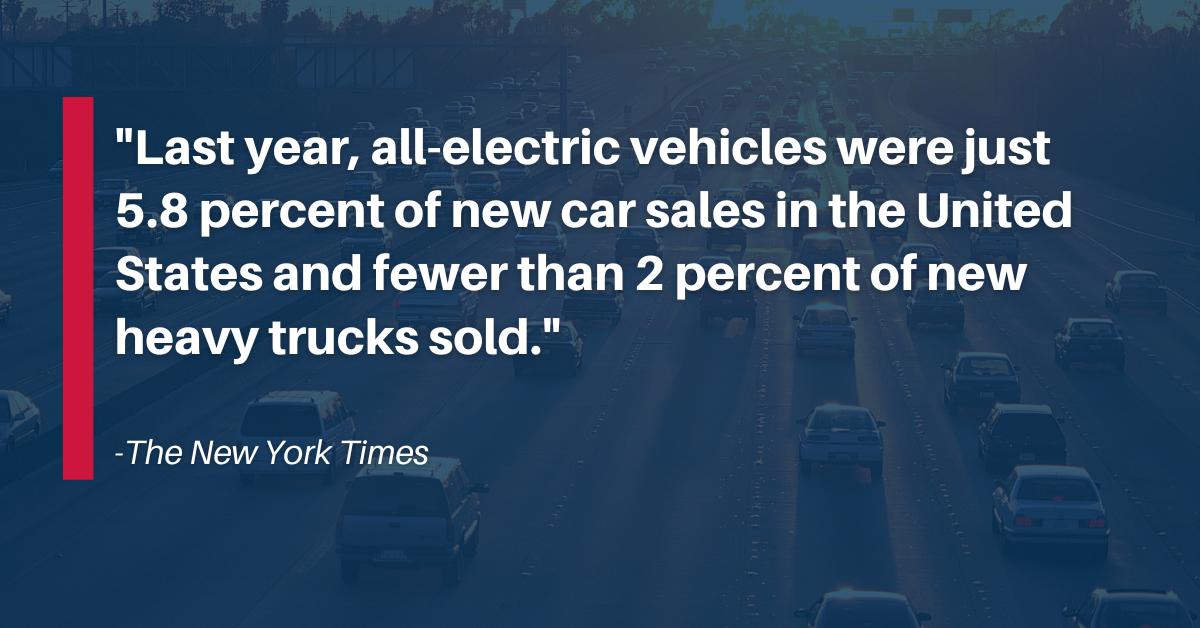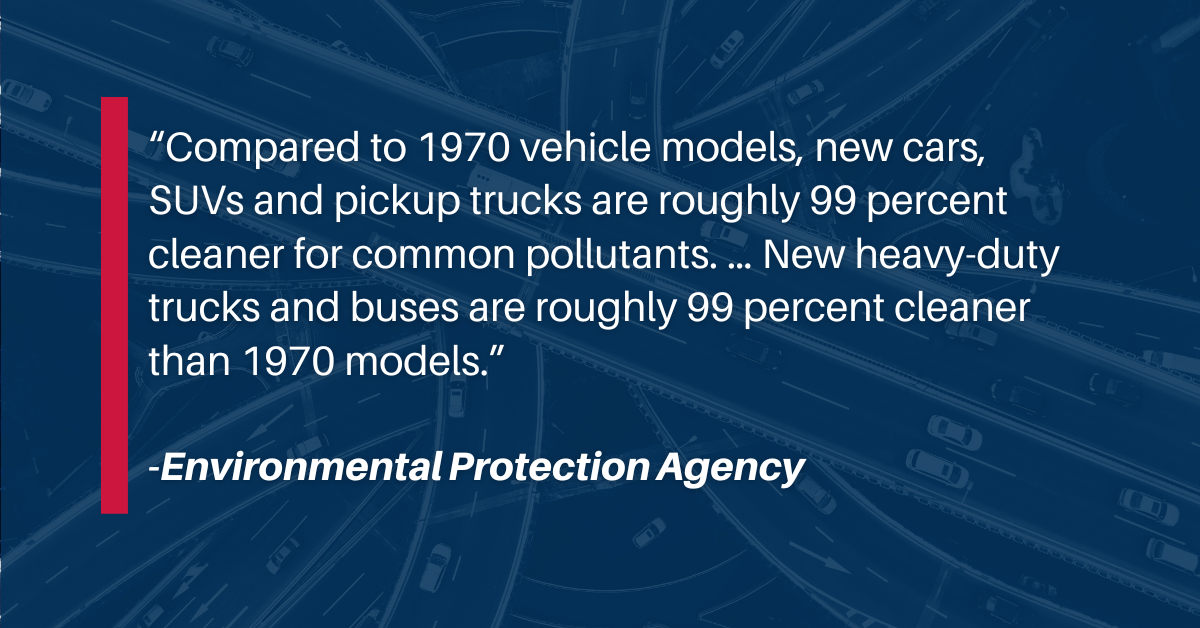New EPA Proposal: The Latest Restriction Aimed at American Energy
Amanda Eversole
Posted April 12, 2023
News: EPA’s new proposed tailpipe emissions rule is the latest move by the Biden administration to hurt consumers with higher costs and increased reliance on unstable foreign supply chains. Per The New York Times, the plans are “designed to ensure two-thirds of new passenger cars and a quarter of new heavy trucks sold in the United States are all-electric by 2032.”
Bottom Line: EPA’s proposed rule is deeply flawed and a major step toward a ban on the gasoline vehicles that Americans rely upon. Today there are 259 million passenger gasoline- and diesel-powered vehicles on the road versus 3 million electric vehicles (EVs).

Questions To Consider: Now that the EPA has released its proposal, the administration must provide answers to these questions being raised across industry, media and government sources:
- Will the New Rule Conflict with the Inflation Reduction Act? One of the major goals of the tax credits in the IRA was to push manufacturers to move their production and supply chains back to the United States or our close allies – and away from China. Yet, The Washington Post reports that the EPA rule would have the United States switch back to depending on “supply chains anchored in China” for EV materials.
- Does America Have Enough Critical Minerals to Hit EPA’s de Facto Quota? Data from a 2022 Congressional Research Service (CRS) report points to potential limitations in obtaining the minerals needed to build EV batteries. From CRS: “These EV battery chemistries depend on five critical minerals whose domestic supply is potentially at risk for disruption: lithium, cobalt, manganese, nickel, and graphite. … The United States is heavily dependent on imports for these minerals for use in EV batteries. … The United States currently mines some lithium, cobalt, and nickel, but it does not currently mine any manganese or graphite.” Another study by The Martec Group shows that China dominates the global market for processing lithium, cobalt and copper and rare earth elements.
- How Is the Rule Realistic? The New York Times reports that in 2022, EV sales were just 5.8 percent of total vehicle sales. EPA’s proposal would push vehicle manufacturers to a benchmark more than 10 times the current level in just a decade. The Alliance of Automotive Innovation in a memo said: “Even with positive EV sales momentum… there are challenges to the electrification transition ahead. This requires a massive, 100-year change to the U.S. industrial base.” (EPA's heavy-duty GHG proposal, announced along with the tailpipe proposal, will only exacerbate the concerns and questions raised above.)
- Are There Enough Charging Stations? Again, according to the Times, “…plenty of hurdles remain for a smooth transition to EVs. One of the biggest is the need for millions of electric vehicle charging stations. Experts say it will not be possible for electric vehicles to go from niche to mainstream without making electric charging stations as ubiquitous as corner gas stations. A 2021 infrastructure law provided $7.5 billion to build a network of about 500,000 charging stations along federal highways, but a January report from S&P Global concluded that millions were needed.” As of 2021, 38 percent of America’s EVs were exclusively in California.

Answers Needed: The questions raised here require answers from President Biden’s team. Instead of more Washington intervention, Americans need dependable transportation fueled by affordable, reliable, American-made energy sources. Americans deserve tech-neutral policies and should not be penalized through unrealistic proposals that serve to restrict market choices and pick winners and losers.
About The Author
Amanda Eversole is API’s executive vice president and chief advocacy officer, and leads efforts to integrate API’s diverse functions and develop and implement a strategic plan. Eversole came to API from JPMorgan Chase & Co., where she was managing director and head of public affairs, building the organization’s public affairs function and creating the framework for the firm’s philanthropic activities. Prior to JPMorgan Chase & Co., she served in a number of leadership positions at the U.S. Chamber of Commerce, including president of C_TEC, the Chamber Technology Engagement Center. Before joining the U.S. Chamber, she worked for RTC Relationship Marketing in business development. Eversole graduated cum laude from the College of William & Mary with a bachelor of business administration and a minor in French, and she earned an M.B.A. from the University of Pennsylvania’s Wharton School where she was a Palmer Scholar and graduated first in her class. She serves on the Board of Directors of Our Energy Policy. She lives in Virginia with her husband, their two daughters and their dog, Gus.


